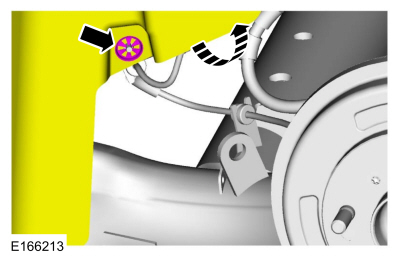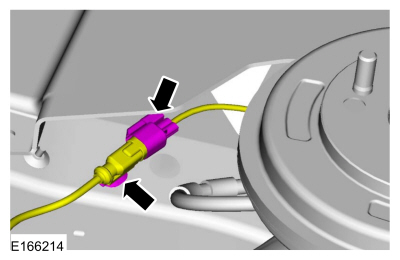Ford Fiesta: Fuel System - General Information - 1.6L EcoBoost (132kW/180PS) – Sigma / Fuel System - Overview. Description and Operation
Overview
The fuel system:
- is a variable speed Closed Loop Pressure Control (CLPC) Fuel System with Gasoline Turbocharged Direct Injection (GTDI).
- uses a single-container fuel tank.
- has a high pressure Fuel Pump that supplies high pressure, low volume fuel pressure to the fuel rails.
- has a in tank Fuel Pump (FP) and Sender Unit that supplies fuel under pressure to the fuel rail.
- has a lifetime fuel filter (serviced as part of the Fuel Pump).
- has an Easy Fuel™ (capless) fuel tank filler pipe assembly, which cannot be modified in any way and is serviced only by the installation of a new fuel tank filler pipe assembly.
- has a supplemental refueling adapter located in the luggage compartment.
- has a FP module that operates on 10 or 12 volts depending on load, that supplies fuel under pressure to the fuel rail.
- has fuel tubes (liquid and vapor) along with brake tubes mounted on the underside of the vehicle in a bundle.
- uses separately controlled fuel injectors for each cylinder. The fuel injectors are mounted to the intake manifold and are supplied with pressurized fuel from the high pressure Fuel Pump to the fuel rail.
- has a serviceable fuel level sender mounted on the Fuel Pump Sender Unit.
Fuel Pump Shut-off Feature
NOTE: Refer to the Description and Operation, Intelligent Access with Push Button Start in Section 419-01A to review the procedures for achieving the various ignition states (ignition OFF, ignition in ACCESSORY, ignition ON and ignition START) on vehicles with this feature.
In the event of a moderate to severe collision, the vehicle is equipped with a Fuel Pump and Sender Shut-off Feature that is initiated by the event notification signal.
The event notification signal is a signal provided by the RCM to the FPDM . Signal communication between the RCM and the FPDM allows the PCM to shut-off the Fuel Pump.
Should the vehicle shut off after a collision due to this feature, the vehicle may be restarted by first turning the ignition to the OFF position and then turn the ignition to the ON position. In some instances the vehicle may not start the first time and may take one additional ignition cycle.
 Specifications
Specifications
General Specifications
Item
Specification
Fuel Pressure
Engine running
55
psi (
380
kPa)
Fuel Tank Capacity
12...
 Fuel System. Diagnosis and Testing
Fuel System. Diagnosis and Testing
Symptom Chart(s)
Symptom Chart
Diagnostics in this manual assume a certain skill level and knowledge of Ford-specific diagnostic practices...
Other information:
Ford Fiesta 2014 - 2019 Service Manual: Headlamps. Diagnosis and Testing
DTC Chart: BCM Diagnostics in this manual assume a certain skill level and knowledge of Ford-specific diagnostic practices. REFER to: Diagnostic Methods (100-00 General Information, Description and Operation). BCM DTC Chart DTC Description Action B1007:92 High-Beam Head..
Ford Fiesta 2014 - 2019 Service Manual: Cylinder Bore Taper. General Procedures
Check NOTE: Refer to the appropriate Section 303-01 for the specification. Measure the cylinder bore at the top, middle and bottom of piston ring travel in 2 directions as indicated. Verify the cylinder bore is within the wear limit. The difference indicates the cylinder bore taper. If the cylinder bore taper does not meet specification, bore the cylinder to the next ..
Categories
- Manuals Home
- Ford Fiesta Service Manual (2014 - 2019)
- Maintenance Schedules
- Engine Component View. Description and Operation
- Valve Clearance Adjustment. General Procedures
- Camshafts. Removal and Installation
- Engine Cooling - 1.6L EcoBoost (132kW/180PS) – Sigma
Rear Wheel Speed Sensor. Removal and Installation
Removal
NOTE: Removal steps in this procedure may contain installation details.
Remove the retainer and pull the rear splash shield outward. Disconnect the electrical connector and detach the wiring retainer.
Disconnect the electrical connector and detach the wiring retainer.
